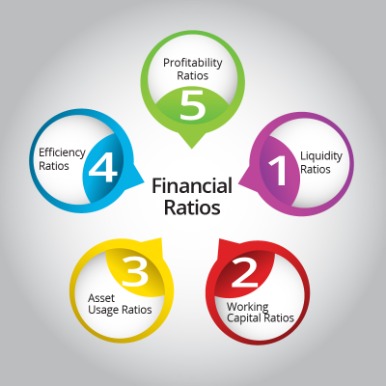Content
- Asset Turnover Ratio
- Accounts Payable Turnover Ratio
- Can Asset Turnover Be Gamed By A Company?
- What Is Turnover Ratio?
- Accounts Receivable Turnover Ratio Template
- Limitations Of Using The Receivables Turnover Ratio
The higher the total asset turnover ratio, the better and the more efficiently you use your assetbase to generate your sales. A turnover ratio represents the amount of assets or liabilities that a company replaces in relation to its sales. The concept is useful for determining the efficiency with which a business utilizes its assets. In most cases, a high asset turnover ratio is considered good, since it implies that receivables are collected quickly, fixed assets are heavily utilized, and little excess inventory is kept on hand.Companies that maintain accounts receivables are indirectly extending interest-free loans to their clients since accounts receivable is money owed without interest. If a company generates a sale to a client, it could extend terms of 30 or 60 days, meaning the client has 30 to 60 days to pay for the product. Generally, a higher ratio is favored because it implies that the company is efficient in generating sales or revenues from its asset base. A lower ratio indicates that a company is not using its assets efficiently and may have internal problems. Average inventory is used instead of ending inventory because many companies’ merchandise fluctuates greatly throughout the year.While the asset turnover ratio considers average total assets in the denominator, the fixed asset turnover ratio looks at only fixed assets. The fixed asset turnover ratio is, in general, used by analysts to measure operating performance. This efficiency ratio compares net sales to fixed assets and measures a company’s ability to generate net sales from its fixed-asset investments, namelyproperty, plant, and equipment (PP&E). Depreciation is the allocation of the cost of a fixed asset, which is spread out—or expensed—each year throughout the asset’s useful life. Typically, a higher fixed asset turnover ratio indicates that a company has more effectively utilized its investment in fixed assets to generate revenue. The fixed asset turnover ratio looks at how efficiently the company uses its fixed assets, like plant and equipment, to generate sales. If you can’t use your fixed assets to generate sales, you are losing money because you have those fixed assets.
Asset Turnover Ratio
These customers may then do business with competitors who will extend them credit. If a company is losing clients or suffering slow growth, they might be better off loosening their credit policy to improve sales, even though it might lead to a lower accounts receivable turnover ratio. The accounts receivable turnover ratio measures a company’s effectiveness in collecting its receivables or money owed by clients. Asset turnover ratios vary across different industry sectors, so only the ratios of companies that are in the same sector should be compared. For example, retail or service sector companies have relatively small asset bases combined with high sales volume. Meanwhile, firms in sectors like utilities or manufacturing tend to have large asset bases, which translates to lower asset turnover.
What is inventory to sales ratio?
The I/S Ratio represents the relationship between your inventory value and your total sales. Its objective is to monitor the capital allocated to inventory, as compared to the company’s sales volume in a given period. The lower the I/S Ratio, the more efficient the company is in allocating capital to its inventory.Glossary of terms and definitions for common financial analysis ratios terms. Return on equity is a measure of financial performance calculated by dividing net income by shareholders’ equity. You, as the owner of your business, have the task of determining the right amount to invest in each of your asset accounts.
Accounts Payable Turnover Ratio
Typically, a low turnover ratio implies that the company should reassess its credit policies to ensure the timely collection of its receivables. However, if a company with a low ratio improves its collection process, it might lead to an influx of cash from collecting on old credit or receivables. Divide the value of net credit sales for the period by the average accounts receivable during the same period.

This implies a minimal need for invested funds, and therefore a high return on investment. The inventory turnover ratio, also known as the stock turnover ratio, is an efficiency ratio that measures how efficiently inventory is managed.
Can Asset Turnover Be Gamed By A Company?
As per its income statement for 2018, it booked net sales of $495,761 million and incurred the cost of sales of $373,396 million. Calculate Walmart Inc.’s Receivable, Payables and Inventory ratio for 2018. In addition, it may show that Walmart is not overspending on inventory purchases and is not incurring high storage and holding costs compared to Target.
- You could also introduce new products or service lines that don’t require any additional investment in assets, thereby opening new revenue streams to your business.
- The inventory turnover ratio, also known as the stock turnover ratio, is an efficiency ratio that measures how efficiently inventory is managed.
- If a company is losing clients or suffering slow growth, they might be better off loosening their credit policy to improve sales, even though it might lead to a lower accounts receivable turnover ratio.
- As per its income statement for 2018, it booked net sales of $495,761 million and incurred the cost of sales of $373,396 million.
- Adam received his master’s in economics from The New School for Social Research and his Ph.D. from the University of Wisconsin-Madison in sociology.
The formula for calculating the inventory turnover ratio is the cost of goods sold divided by the company’s average inventory. The first step in calculating the ratio is to extract the cost-of-goods-sold amount from a company’s income statement. This balance reports only the costs that the company incurs to purchase, modify and store goods it actually sells during the year. It does not, however, include the cost of goods the company still holds in inventory. To calculate the average inventory for the denominator of the ratio, you must obtain a balance sheet that reports ending and beginning balances. Calculating the average requires summing the beginning and ending inventory balances and dividing it by two. When you analyze your asset management ratios, you can look at your total asset turnover ratio and if there is a problem, you can go back to your other asset management ratios and isolate the problem.
What Is Turnover Ratio?
In order to be effective and efficient, those assets must be used as well as possible to generate sales. The fixed asset turnover ratio is an important asset management ratio because it helps the business owner measure the efficiency of the firm’s plant and equipment.A higher ratio is considered to be better as it would indicate that the company is optimally using the resources to earn revenue and it would imply a higher ROI and the funds invested are used the least. Lastly, a low receivables turnover might not necessarily indicate that the company’s issuing of credit and collecting of debt is lacking.The inventory turnover ratio is calculated by dividing the cost of goods sold for a period by the average inventory for that period. Depending on the industry that the company operates in, inventory can help determine its liquidity. If a retail company reports a low inventory turnover ratio, the inventory may be obsolete for the company, resulting in lost sales and additional holding costs.Adam received his master’s in economics from The New School for Social Research and his Ph.D. from the University of Wisconsin-Madison in sociology.

Since it costs Wal-Mart money to store inventory, the longer it retains possession, the more expensive it becomes. Therefore, the lower the inventory turnover-in-days ratio, the happier Wal-Mart shareholders are. So, it can be easily said that the turnover ratios are very important for a company as it indicates its short-term liquidity position and working capital cycle during a given period.Learn more about how you can improve payment processing at your business today. This means that Donny only sold roughly a third of its inventory during the year. It also implies that it would take Donny approximately 3 years to sell his entire inventory or complete one turn. Sales have to match inventory purchases otherwise the inventory will not turn effectively. That’s why the purchasing and sales departments must be in tune with each other.The turnover ratios analysis is important to the internal as well as the external parties of the company. The Turnover Ratios uses by the debtors are to find how many days of credit they will receive. As such, the beginning and ending values selected when calculating the average accounts receivable should be carefully chosen to accurately reflect the company’s performance. Investors could take an average of accounts receivable from each month during a 12-month period to help smooth out any seasonal gaps. On the other hand, if a company’s credit policy is too conservative, it might drive away potential customers.Any comparisons of the turnover ratio should be made with companies that are in the same industry and, ideally, have similar business models. Companies of different sizes may often have very different capital structures, which can greatly influence turnover calculations, and the same is often true of companies in different industries. We can interpret the ratio to mean that Company A collected its receivables 11.76 times on average that year. In other words, the company converted its receivables to cash 11.76 times that year. A company could compare several years to ascertain whether 11.76 is an improvement or an indication of a slower collection process. A high ratio can also suggest that a company is conservative when it comes to extending credit to its customers. Conservative credit policy can be beneficial since it could help the company avoid extending credit to customers who may not be able to pay on time.As you can see in the example below, the accounts receivable balance is driven by the assumption that revenue takes approximately 10 days to be received . Therefore, revenue in each period is multiplied by 10 and divided by the number of days in the period to get the AR balance. Since this ratio can vary widely from one industry to the next, comparing the asset turnover ratios of a retail company and a telecommunications company would not be very productive. Comparisons are only meaningful when they are made for different companies within the same sector. The higher the asset turnover ratio, the more efficient a company is at generating revenue from its assets. Conversely, if a company has a low asset turnover ratio, it indicates it is not efficiently using its assets to generate sales. A slight variation of the inventory turnover ratio analyzes the number of days that a company holds inventory in its stores and warehouses before it’s sold to customers.This provides the same information as the original turnover ratio, but reports it in terms of the number of days rather than the times per year inventory is replaced. A high accounts receivable turnover also indicates that the company enjoys a high-quality customer base that is able to pay their debts quickly. Also, a high ratio can suggest that the company follows a conservative credit policy such as net-20-days or even a net-10-days policy.